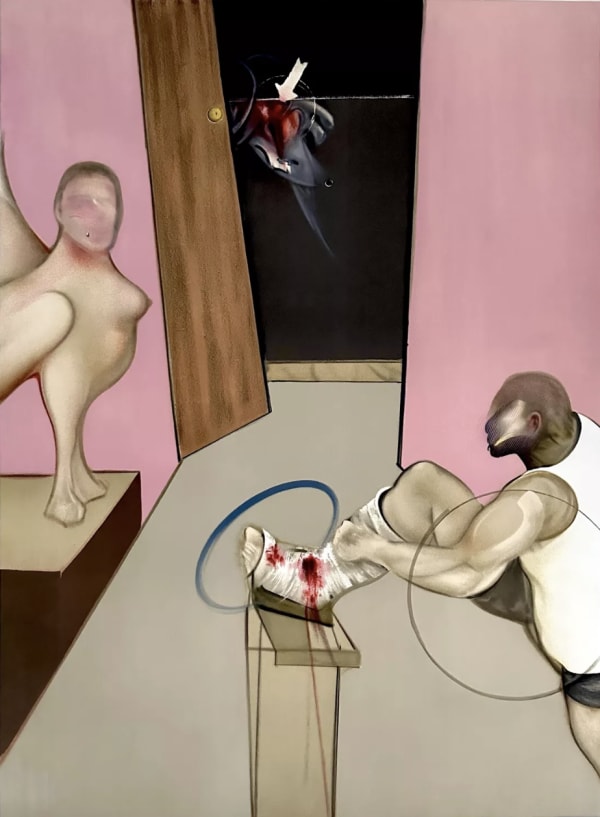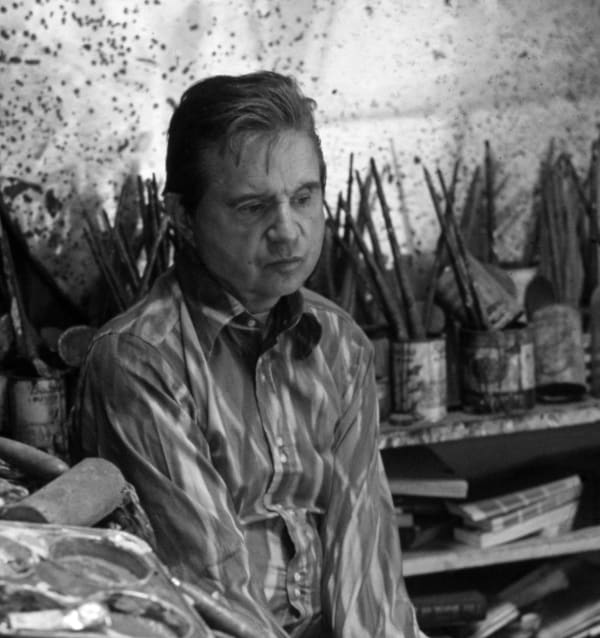-

Three Studies for Figures at the Base of a Crucifixion, 1944
Oil and Pastel on fibreboard, each panel 94 x 74cm
©The Estate of Francis Bacon, Image repoduced for educational purposes only
-
“I wanted to paint the scream more than the horror.”
-Francis Bacon
The central figure, with its gaping mouth and stretched neck, evokes both a scream and a silent lament. The creature on the left, hunched and eyeless, appears immobilised in its suffering, while the rightmost form, part beast and part bird, writhes in a pose of both defiance and defeat. Together, they form a chorus of anguish, stripped of narrative but charged with emotion.Bacon’s decision to paint them in isolation, against a single field of acid orange, intensifies their presence. There is nowhere for them, or for the viewer, to escape. In their distorted anatomy, Bacon captures something recognisably human, but pushed to the edge of recognition. These figures are not religious symbols but psychological ones, embodying pain, fear, and the primal forces that lie beneath the surface of civilisation.



